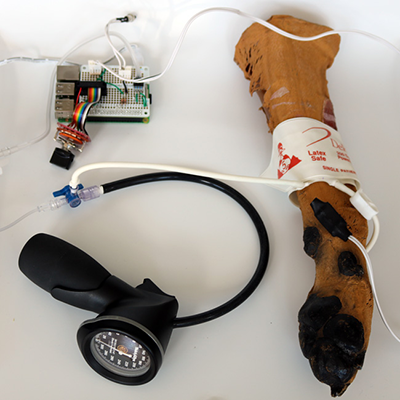VR & Simulations
By digitising reality, we can make previously inaccessible areas and activities available to everyone, as well as provide safer and easier ways to practice delicate or dangerous medical procedures.

Virtual Simulations
The Digital Education Unit has long been engaged in offering unique solutions to the complex problems of online teaching. During the COVID pandemic our services were never more in demand.
We took the opportunity to develop a series of tools to address the need for practical skills training when travel was no longer an option. Specifically, here we developed tools for Conservation Medicine training delivered in a video game style simulated environment, with the student taking on the controlling position and being taught through online prompts and dialogue.
We developed an interactive simulation to complement and enhance the training in population monitoring, with a focus on understanding how to use radio telemetry to study animal home range/movement and to decipher the strength of a radio collar signal through nuances in signal output.
A second simulation provides a controlled environment to teach safe immobilisation technique of free-living wild animals through chemical means, which is an essential tool for wildlife health professionals. This is a risk-free scenario to evaluate the darting procedure and to visualise the implications of an anaesthetic procedure in the field, supplementing the theory on safe, ethical, humane and professional methods.
These developments have sparked the imagination of other colleagues, and this is a service in which we are expanding our efforts.

Interactive Virtual Simulation
The original virtual slaughterhouse was developed by our veterinary public health department using an architectural design package. This was a detailed walk through of a cattle facility, later expanded to a pig facility.
A requirement to change the delivery platform has provided an opportunity to refresh the existing content and to adapt it to align with richer pedagogical principles. Transferring to a gaming platform made it possible to embed interactivity, self-determined exploration and problem solving to push the boundaries of simulation and has resulted in a robust educational tool.
The RCVS requirement for students to attend a slaughter facility, in a location where there is limited access to suitable facilities, has added complex logistical strain on the school. The virtual slaughterhouse can be used to teach health and safety without the risk and gradually introduce students to an experience that many will find distressing.
Student interaction with the simulator will align with the requirements of the veterinary public health courses, advancing as they progress through the degree programme incorporating real time feedback and structured, motivational goals to encourage their progression.
The initial plan is for the DEU to replace the Cattle and Pig simulations, later expanding the provision to include Poultry which will meet the suggested requirements of AVMA.

VR Tours
In 2017 our online student cohort became as large as our on-campus cohort. We believe that the Easter bush campus is a jewel in our crown and wanted all students to feel like they could share the space.
This also offered a unique opportunity for our national and international recruiting teams to share the campus with prospective students. This project uses 360 images of key areas and facilities to put the viewer in the space, with the freedom to look around for themselves.
The images from multiple locations were combined along with a map of the building to provide an interactive walkthrough, narrated by our own staff and students.

Simulation Models

In collaboration with the School’s Clinical Skills Team, the DEU developed a Doppler flow measurement simulator to teach the measurement of systolic blood pressure.
Doppler flow measurement is a cheap technique for non-invasive measurement of systolic blood pressure commonly used in small animal practices, and as such is a skill we require our students to master.
The technique can be practised on live animals or students themselves, but at Edinburgh we are reducing our use of live animals and have safety concerns about self-experimentation. Also, practising on a live subject does not produce consistent and repeatable results that can be later checked for accuracy.
As a result of collaboration between the Clinical Skills Team and Digital Education Unit, we created a simulator model based on a Raspberry Pi, which has since been used by students during Clinical Skills practicals. We have provided building instructions for it online, and other vet schools have built their own models.

